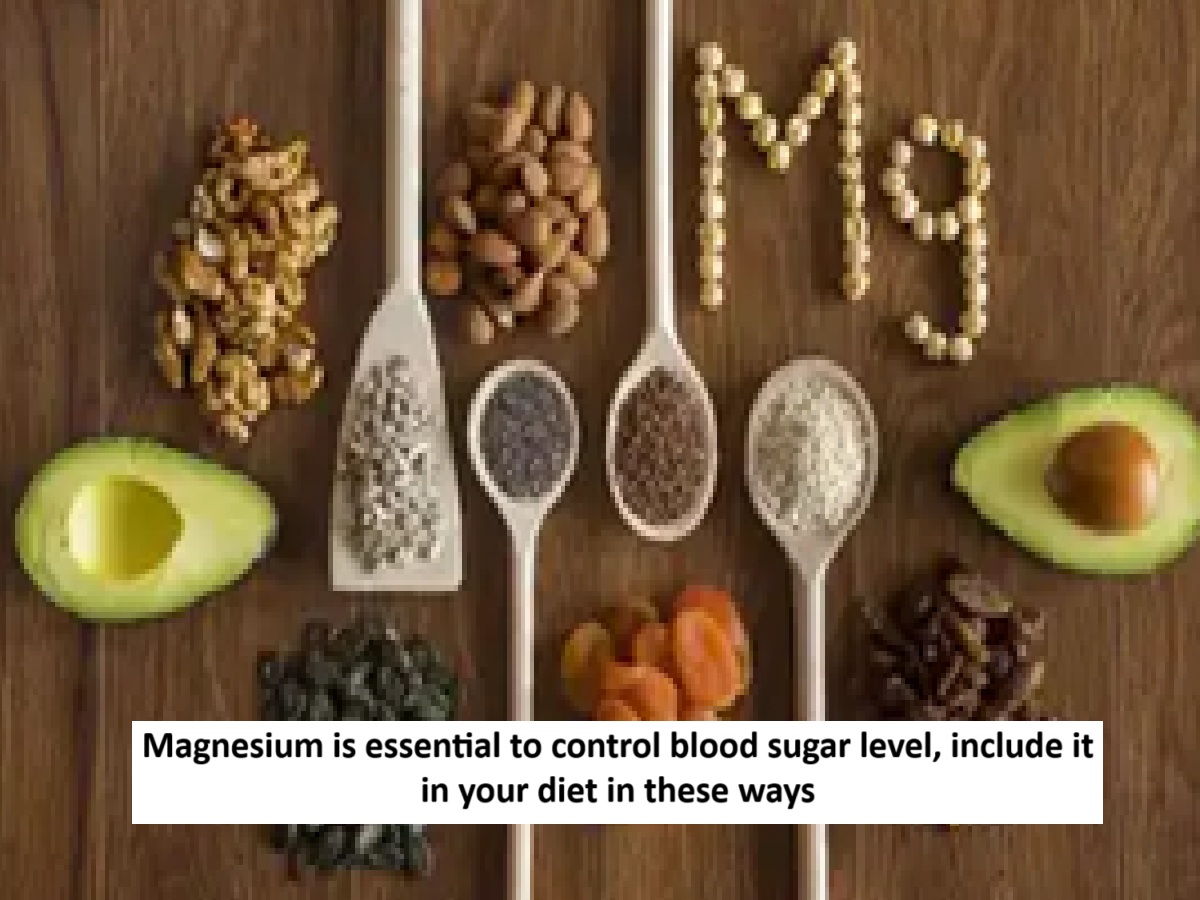
News Topical, Digital Desk : Diabetes has become a common disease in today's time. Due to unhealthy lifestyle and diet, the cases of this disease are increasing rapidly. The biggest challenge for diabetes patients is to control blood sugar level. Along with medicines, having a proper diet is also equally important to keep blood sugar under control.
However, often people do not pay attention to the fact that magnesium (Magnesium to Control Blood Sugar) is also very important to control blood sugar level. Yes, magnesium can help in managing blood sugar level better. Let us know how magnesium is helpful in this and what things should be included in the diet to overcome its deficiency.
What is the connection between magnesium and blood sugar?
- Increases insulin sensitivity- Magnesium makes body cells sensitive to insulin. When there is a deficiency of magnesium in the body, insulin resistance in the cells increases. This means that glucose cannot enter the cells and remains accumulated in the blood, which increases the blood sugar level.
- Helpful in glucose metabolism- It improves glucose metabolism by helping in the secretion of insulin.
- Reduces inflammation – Magnesium has anti-inflammatory properties , which may help reduce chronic inflammation associated with diabetes.
Symptoms of Magnesium Deficiency
- Fatigue and weakness
- muscle spasms or tremors
- irregular heart rate
- irritability
How to include magnesium in your diet?
Green leafy vegetables-
- Green vegetables like spinach, kale, fenugreek, mustard greens, and broccoli are excellent sources of magnesium.
Nuts and seeds-
- A handful of almonds or cashews are not only healthy snacks, but also fulfil a large portion of your daily magnesium requirement.
- Pumpkin seeds and sunflower seeds are rich in magnesium.
- Sesame gajak, sesame chikki, or using sesame in food can be beneficial.
Whole grains-
- Rajgira and buckwheat are gluten-free and are also rich in magnesium. Roti or parathas can be made from the flour made from these.
- Making oats porridge and eating it for breakfast is a great option.
- Use brown rice and barley instead of white rice.
Pulses and legumes-
- Pulses and legumes like black gram, kidney beans, moong dal, and soybeans are a good source of not only protein but also magnesium.
dark chocolate-
- If you have a sweet tooth, this is good news for you. Dark chocolate with 70% or more cocoa is rich in magnesium. One or two small pieces are enough.
Banana and Avocado-
- Banana is not only a good source of potassium but also of magnesium. Similarly, avocado is also a nutritious fruit in which magnesium is found.
Fatty fish-
- Fish like salmon and mackerel contain protein and omega-3 fatty acids as well as magnesium.
Read More: Why do you feel sleepy again and again after lunch, is this a symptom of some disease?
--Advertisement--

 Share
Share



